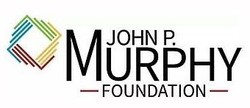Monday, June 30, 2014
Three Thoughts for Every Urban Developer
When Ron Ratner spoke to the City Club of Cleveland on May 23 as part of the Business Leaders Series, his remarks offered three critical insights into Cleveland’s future development and the conventional wisdom of urban planning:
First, Ratner said, “community buy-in in a shared vision is absolutely critical” to the success of development projects. This is something that can only come from broad based community engagement, and not simply from the decisions of local governments and town meetings. If done properly, the process of reinventing and reconstructing an area should empower residents to take ownership of it. This fostering of civic pride ensures the success of newly renovated spaces and also strengthens the surrounding community.
Second, planners “need to rethink density as it relates to new neighborhoods,” Ratner said. The success of development projects ultimately relies on their usage. Therefore, if new projects are to be used, they must be accessible to the community’s residents. Density of businesses, schools, and houses increases the walkability of an area, while also supporting various other modes of transit, especially public transportation. These are essential components of accessibility.
Lastly, Ratner said there is a “critical need for connectivity” amongst communities. He said that communities are not islands, and therefore single use spaces are “bland and ultimately fragile,” not faring well over time. Echoing his two previous points, Ratner suggests that tight-knit communities are the most desirable outcome of successful and smart urban planning.
As the president and CEO of Forest City Residential Group, Ron Ratner is intimately familiar with the catalytic growth of commercial and real estate properties, especially in his native city of Cleveland. His experience with transformational development projects in Denver, New York City, and Washington D.C. have focused on the need to rethink, repurpose, reuse, and revitalize in an effort to reinvent cities.
Ratner hopes similar processes can take root in Cleveland. He specifically sees the Opportunity Corridor – a road connecting University Circle and a number of east side neighborhoods to I-490 and the west side – as an important undertaking.
“The challenge, as I see it, is to come together as a community around a shared vision and really find the ‘opportunity’ in opportunity corridor,” said Ratner. Ultimately, Ratner sees the Corridor as a manifestation of the three insights he presented in his talk: a necessary part of what urban planners should look to do as they work to improve Cleveland.






